|
|
Post by mossie on May 14, 2013 7:22:08 GMT
The ornamentation is so OTT that it becomes beautiful.
Could the trees be killed by methane released from rotting vegetation or garbage buried beneath them ?
A fascinating place, thanks Bixa.
|
|
|
|
Post by bixaorellana on May 14, 2013 16:44:30 GMT
Thank you, Lola.
True about the OTT, Mossie, which until I made the report always repelled me. The proportions are so pleasing, though, that they make the excess work.
Re: methane -- a good theory, although I'm wondering if it wasn't the leaking water that did the damage that let disease enter. There are also electrical installations in the space, taking up room that maybe the tree roots needed. This video shows what's underneath, from :23 to :31 and again from :47 to 1:19. It was taken when the short-lived replacement trees were planted, at which time repair work was also done on the electrical part. To me, it looks as though there is inadequate drainage.
|
|
|
|
Post by lugg on May 14, 2013 20:12:05 GMT
Thanks Bixa for the extra info - I noticed the lights installed some time after the healthy tree pics and wondered about that too. However it would not really account for the disease in the replacements ...or would it ?
|
|
|
|
Post by bixaorellana on May 17, 2013 23:22:29 GMT
Lugg, good question. Surely digging around tree roots might injure them & allow disease or rot to enter.
As far as I can figure out, the replacement trees were healthy. However one of the trees slated to be used as a replacement was found to be diseased while still at the nursery, so didn't get used. Questions:
1) do they know what they're doing? 2) was it smart to dump a bunch of chemicals in the planting area for new trees which were bound to be stressed because of transplanting, if nothing else? 3) were they transplanted correctly & cared for sufficiently after transplanting? 4) do they even know why the original trees died?
|
|
|
|
Post by Deleted on May 18, 2013 4:39:53 GMT
One hopes that there is a municipal gardener supervisor who knows what needs to be done. I was passing through the Luxembourg gardens in Paris yesterday where a big section of trees has been removed due to disease -- sometimes it just has to be done. There is a sign saying that replacement trees will be planted in the autumn.
I think that those of us who try to nurse sickly houseplants against all logic are regularly distressed to see historic trees removed in various places "without a second thought" but I think they have enough experience with this sort of thing.
Of course even in a city like Paris which spends a fortune on planting, one sometimes sees apparent mistakes and newly planted trees that suddenly die. One thing that I have noticed though over the years here is that when I first arrived in Paris, I would sometimes see a row of saplings planted along a street, and you could count on about 20% of them to die and have to be replaced a few months later. In recent years, and notably in my neighbourhood where they have redone quite a few streets and added new trees, they seem to have a 100% success rate now, so they have clearly learned something about soil and plant preparation and probably also timing.
|
|
|
|
Post by mossie on May 20, 2013 7:37:32 GMT
I believe replanting trees is a real specialists job, the roots can suffer so much disturbance and damage, firstly being dug up, then transported and then transplanted. Much TLC needed.
|
|
|
|
Post by bixaorellana on May 27, 2013 6:03:52 GMT
And now I want to add to this thread because last week I finally went to the ex-convent in order to make a report for this forum. To start, let me quote myself from two & a half years ago:Is there anything left to see?
As it happens, quite a bit. The convent is now a cultural center, housing a wonderful museum and a glorious botanical garden featuring native plants of Oaxaca. We'll do that on some other days.
The entrance to the cultural center is in the ell formed by the church and convent.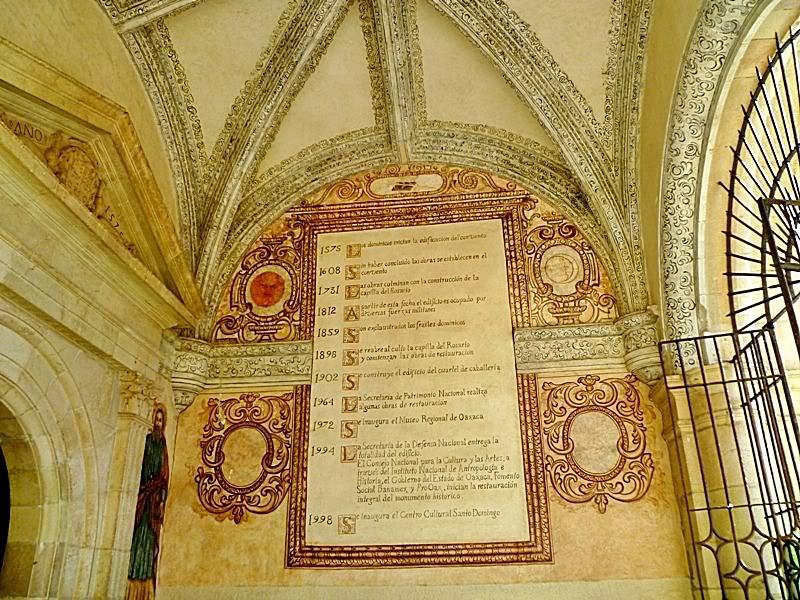 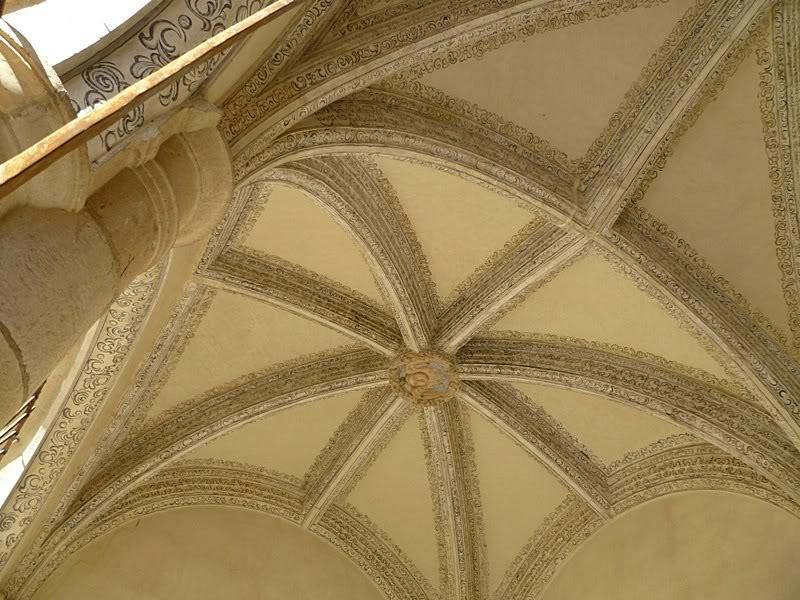
overview and history.
|
|
|
|
Post by bixaorellana on May 27, 2013 6:21:05 GMT
I visited in the middle of a heat wave, although all the open areas were breezy and pleasant.
Wish I'd taken a full picture of the long gallery to the left of the entrance. It's so wide and long that it's used for lectures and concerts. At any rate, it overlooks this: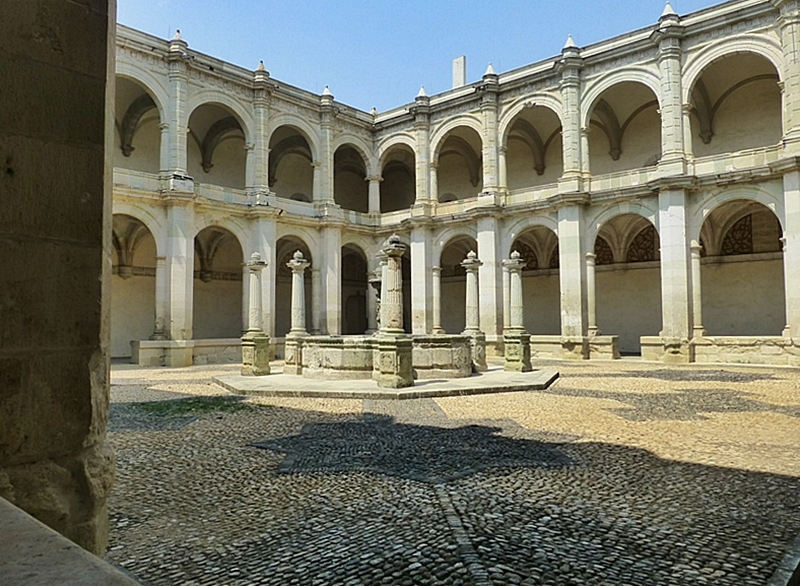 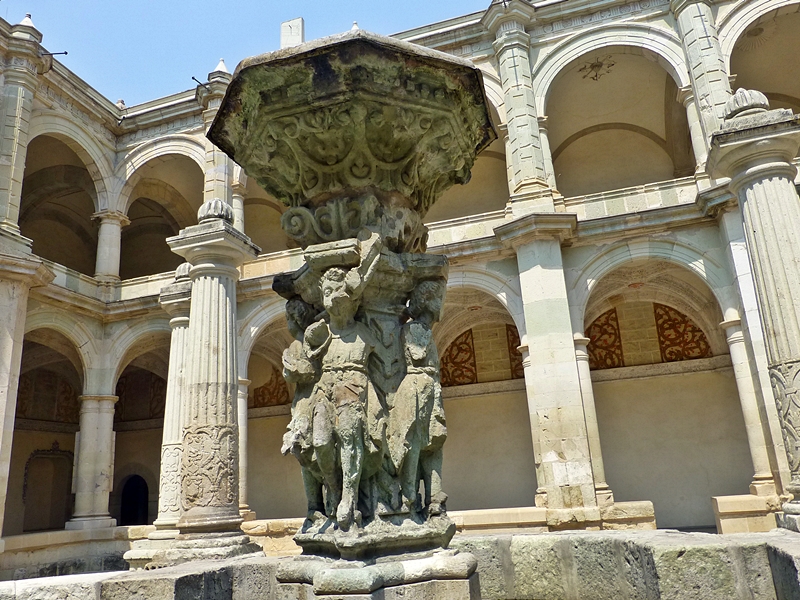 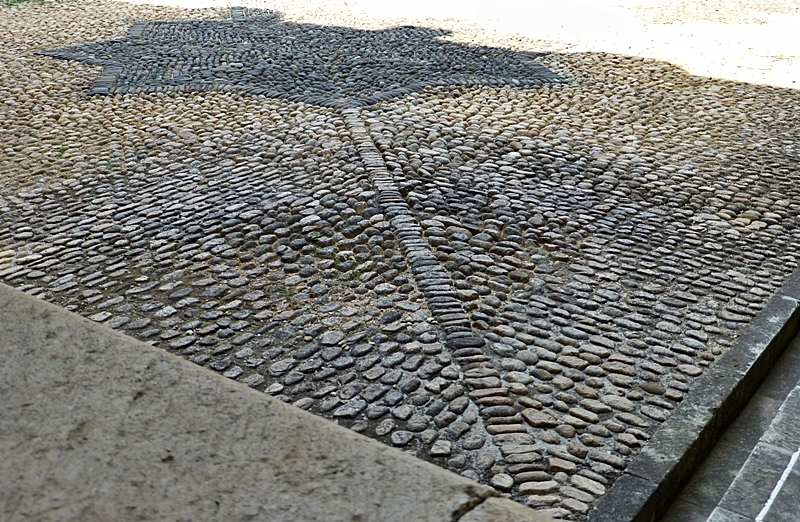 A quick peek into the gift shop -- it's in the gallery opposite the fountain ~ A quick peek into the gift shop -- it's in the gallery opposite the fountain ~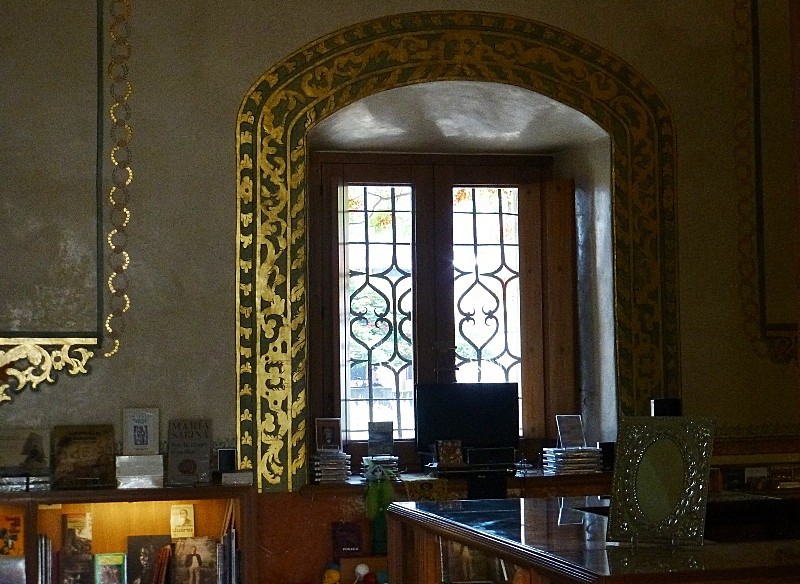 Some of the gallery's magnificent ceiling ~ Some of the gallery's magnificent ceiling ~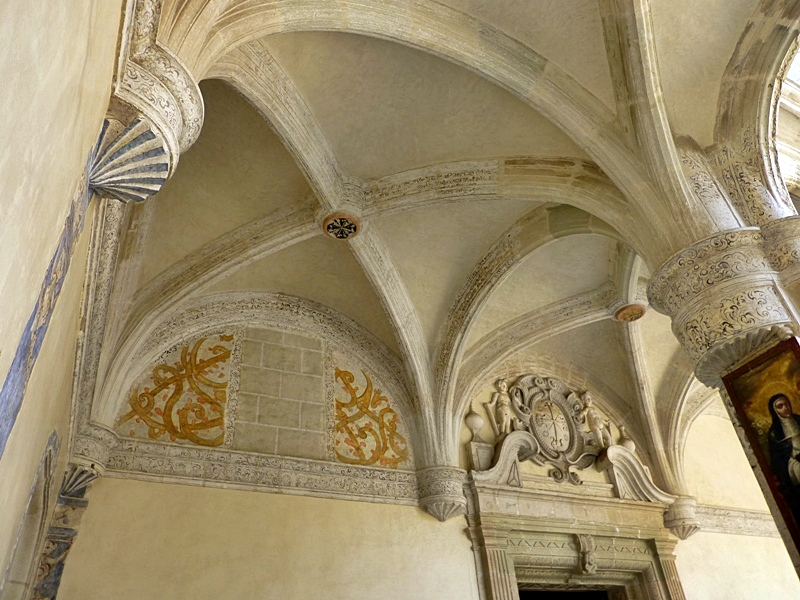 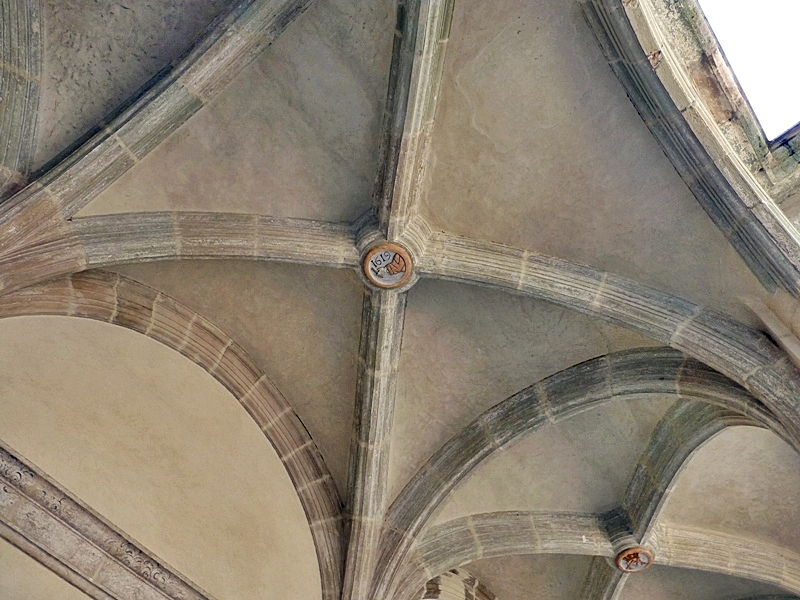
|
|
|
|
Post by Deleted on May 27, 2013 6:36:47 GMT
Real cobblestones in the courtyard!  Was the fountain just temporarily out of service or has it been dry "forever"? (as in "last time I saw it working was back in 1963....") |
|
|
|
Post by bixaorellana on May 27, 2013 6:44:22 GMT
|
|
|
|
Post by bixaorellana on May 27, 2013 6:50:49 GMT
Kerouac, about the fountain -- that first link, at the bottom of #36, says that the fountain & one of its columns are one of the few completely original things from when the convent was first built. Considering the hard use the place has had, it's amazing it's still there. It did have water in it.
|
|
|
|
Post by bjd on May 27, 2013 7:00:01 GMT
Nice pics, Bixa. I prefer this kind of thing to the over-the-top usual decor of most Spanish/Latin American churches.
|
|
|
|
Post by bixaorellana on May 27, 2013 17:25:22 GMT
Thanks, Bjd. I'm kind of enamored of these ex-convents. They're scattered around the country and often don't appear in guidebooks. My sister and I came across one in the state of Mexico that was beautiful in its abandonment, with all the wall decorations done in faded black and white. I'll have to organize my photos of the ex-convento at Cuilapam, quite close to here. It was never finished because too much money had already been spent on it, and has things like soaring arches that end in mid-air. What I like about such places is that they have high open spaces plus, unlike churches, aren't used daily and are often little visited. That gives them a feeling of existing outside of time, as though you step through another dimension and somehow encounter them. Anyway, to continue our tour of this particular ex-convento ~~ I haven't been here for years, but remember parts of the museum as being quite interesting. Maybe it's because I've gotten old and cranky, or maybe some of the earlier exhibits were only on loan, but I couldn't get into the museum-as-museum aspect this time. That's largely because of the terrible lighting (also mentioned in the overview link in #36) and because the gloom made the airless heat in the exhibition spaces that much more oppressive.
This photo gives an accurate idea of the various exhibition rooms ~
Whew! I suppose those were series of cells that were opened up to make exhibition halls.
At any rate, you all will be seeing bunches of the perfectly wonderful outer areas & not too much of the exhibits.
Let's step out into the hallway so I can show you the wall. I was fascinated by the texture and gloss of the walls and ceilings. A guard told me that they're coated with a mixture of cal (Calcium hydroxide), cactus pad mucilage, and egg whites. You can clearly see the outline of the underlying quarry stone in the left side of the penultimate picture in #39.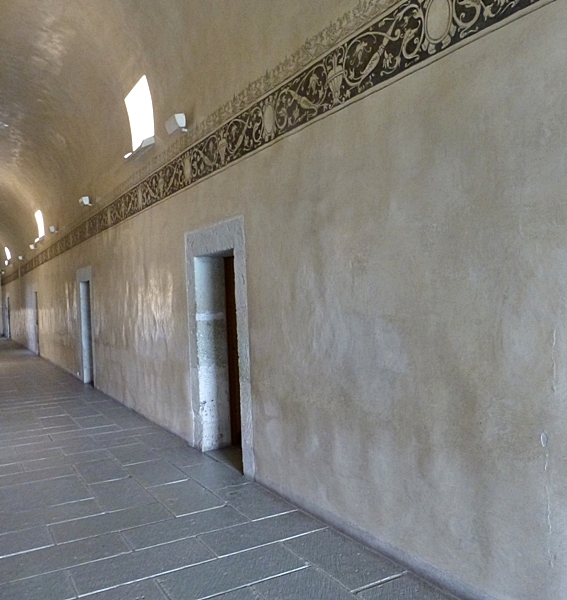 One of my favorite things about this place are the views framed by the massive walls, One of my favorite things about this place are the views framed by the massive walls,
which are like coming upon live early Renaissance paintings ~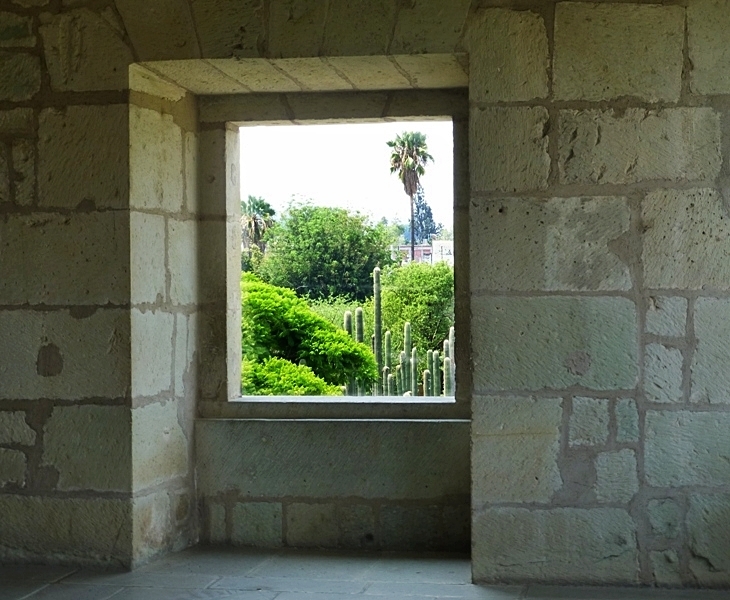 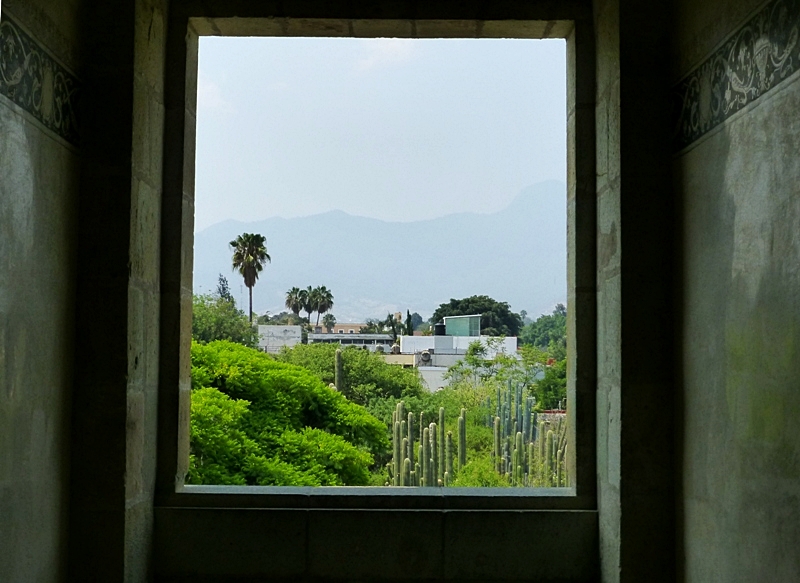 But what's this? I'm standing in the 21st century, in a valley ringed by mountains, But what's this? I'm standing in the 21st century, in a valley ringed by mountains,
looking out at 17th century maritime disasters!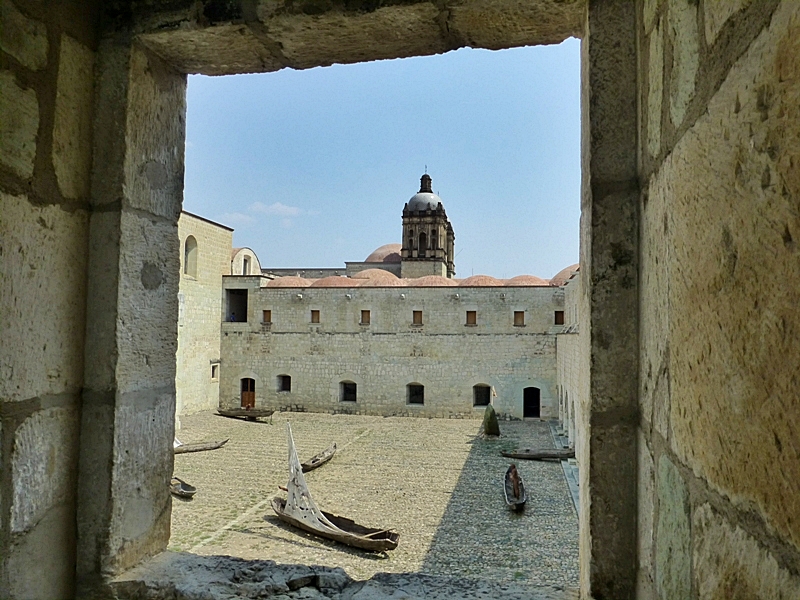 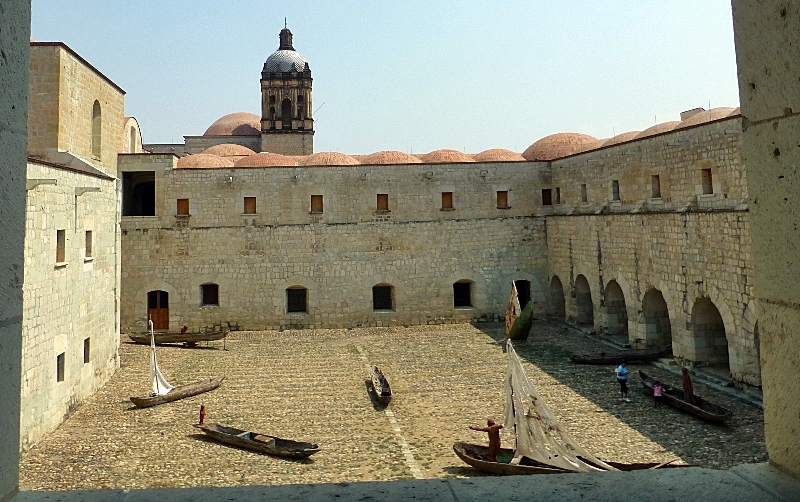 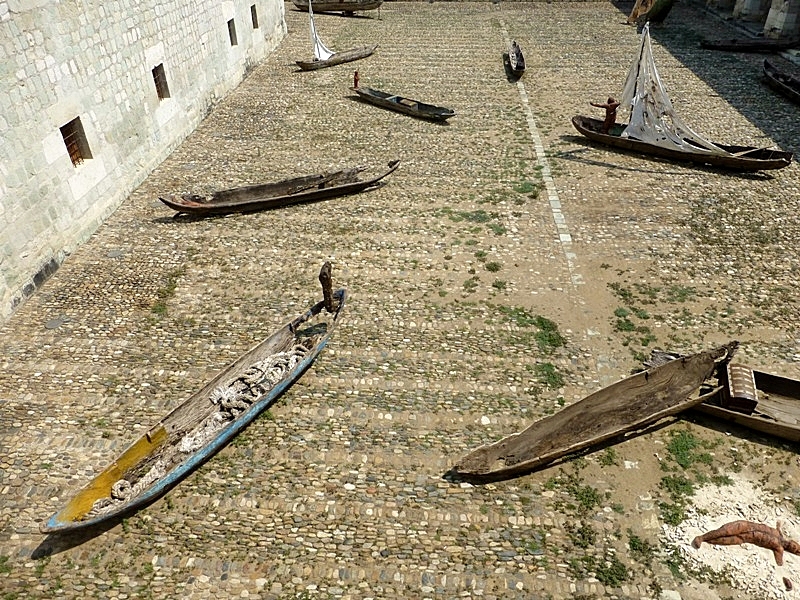 |
|
|
|
Post by bjd on May 27, 2013 18:40:34 GMT
Obviously installation art.
|
|
|
|
Post by lugg on May 27, 2013 21:49:33 GMT
I had hoped you would post some photos and info re the museum so especially enjoyed seeing this.
Lovely and I must say I am impressed at the lengths you go to ( laying on your back on the stairs ;D )
The ex-convents in Mexico are very different to those in England which ( at least the ones I have visited) are austere in comparison .
|
|
|
|
Post by lola on May 28, 2013 0:48:22 GMT
Wonderful, Bixa.
I love the shiny barrel vault, the cobblestones, and the maritime disasters.
Coincidentally, this afternoon I looked up Sts. Dominic (or Domingo) and Peter of Verona, who appear on the staircase ceiling, while I was following side issues in Joan of Arc biography. Peter was an anti-Cathar who was appointed Inquisitor, but seems to have been a decent sort who advocated clemency for reformed heretics. His images have a cleaver lodged in his head, giving us a hint how he was martyred. Catherine of Siena appeared to Joan, and St. Dominic appeared to Catherine, and Pedro de Verona is linked in there somehow.
|
|
|
|
Post by bixaorellana on May 28, 2013 1:01:45 GMT
I had hoped you would post some photos and info re the museum so especially enjoyed seeing this.
[Bixa responds in brownish red] Thank you! I have a great deal more to show. 
Lovely and I must say I am impressed at the lengths you go to ( laying on your back on the stairs ;D )
Well, I was wearing a longish dress & my dignity is doubtful at the best of times.
The ex-convents in Mexico are very different to those in England which ( at least the ones I have visited) are austere in comparison.
I love that austerity in the pictures I've seen. Anyway, if the English had come over to the New World to exploit it for gold as the Spaniards did, they could have gilded up those bare choirs as well.  |
|
|
|
Post by htmb on May 28, 2013 1:22:05 GMT
Bixa, this is fascinating and your photos are outstanding. There's much to see in each photo. I, too, like the views looking out the windows. The only thing it's lacking is a photo of you lying on your back, sacrificing ourself for the perfect shot!  |
|
|
|
Post by bixaorellana on May 28, 2013 2:16:34 GMT
Sorry, Lola ~~ I took so long at my reply to Lugg, I didn't see your very interesting response. Thank you! I had no idea who Peter of Verona was. So awkward trying to explain away that whole unfortunate inquisition thing! I didn't know there were compassionate inquisitors. I wonder if Peter of Verona is depicted over in Tlacolula, where all the saints are shown in their martyred states. (severed heads under arms & the like). I only knew that St. Dominic founded the Dominicans, but didn't realize he had the stigmata until I got my pics off the camera. Is St. Catherine of Siena she of the wheel?
Have you seen The Passion of St. Joan? It's an extremely powerful and compelling film. Although a silent movie (1928), the music "Voices of Light" by Richard Einhorn has been added to some versions, to great effect in my opinion. There are some versions with only French intertitles, if you can find them, plus completely silent, as would be authentic.
Htmb, I really appreciate your kind words, especially since you know I admire your very complete reports & excellent photography.
Don't worry, there will be lots more views from windows & galleries, plus maybe a selfie taken in the bathroom, if y'all are good boys & girls. ;D
|
|
|
|
Post by lola on May 28, 2013 4:50:08 GMT
Lovely. No, I have never seen that before, and am glad to have the links, and the Voices of Light. Thank you, Bixa!
|
|
|
|
Post by bixaorellana on May 28, 2013 5:37:47 GMT
|
|
|
|
Post by tod2 on May 28, 2013 7:36:34 GMT
Bixa - You have done an OUTSTANDING presentation! This is a thread to come back to time and time again. Everything you showed us was fascinating and I just loved looking through those incredible 'windows' in the thick walls and seeing the lovely gardens below. Just lovely - thank you so much.
Looking forward to much more!
|
|
|
|
Post by anshjain97 on May 28, 2013 10:01:41 GMT
Oh- there is more? Marvelous!
|
|
|
|
Post by Deleted on May 28, 2013 10:25:41 GMT
Funny, the moment I saw the slight gloss on the corridor wall, the first thing that came to mind was "egg white." When my grandmother would bake brioches or other baked items, she would brush them with egg white before putting them in the oven, and the gloss when they came out was that same sort of sheen. Frankly, those boats in that courtyard do nothing for me. If ever I buy the place, I am having the boats and the cobbles removed and will put in a nice garden with a little pond and fountain.  |
|
|
|
Post by nycgirl on May 28, 2013 17:43:17 GMT
Wow, this place has an incredible amount of detail and you showcase it beautifully.
I love the view from the windows, with spires of cacti rising from the ground and mountains looming in the distance.
|
|
|
|
Post by mossie on May 28, 2013 18:40:34 GMT
Overwhelming, such a riot of gold. Must admit the strange boats do nothing for me, I suppose there is symbolism there, but I am too simple minded to get it.
|
|
|
|
Post by bixaorellana on May 29, 2013 5:48:29 GMT
Lola, you're very welcome. Hope to hear your impression of the film one day. And to the rest of you ~~ thanks for being so kind & encouraging. Tod, I hope you'll come & see it all for yourself one day. The textiles here alone would drive you ga-ga.  Yes, Ansh, more to come. Since I've moved, I pass by Sto. Domingo at least five times a week, so will probably be adding to this again some day after this particular set is done. Kerouac, after the guard told me about the plaster recipe, I remembered visiting a Louisiana plantation house with plaster that incorporated egg white and deer hair. They must have made a lot of sponge cakes back when. Thanks, NYCGirl. I'd love to see what kind of a report you'd make on this area, with your super photographic eye and your wonderful way of interacting with people. Mossie, I can't help but like all that gold dazzle, although a side of me feels I should disapprove of it. So, moving right along, we're going to duck back into the inner hallway so I can make a stab at appreciating the museum exhibits.
A couple of shots from the outer gallery. The fragment of mural is fairly high up on the wall. There are a few of these fragments, some almost too faint to see. I like them every bit as much as the fancy restored things, simply because we're looking directly at something created so long ago.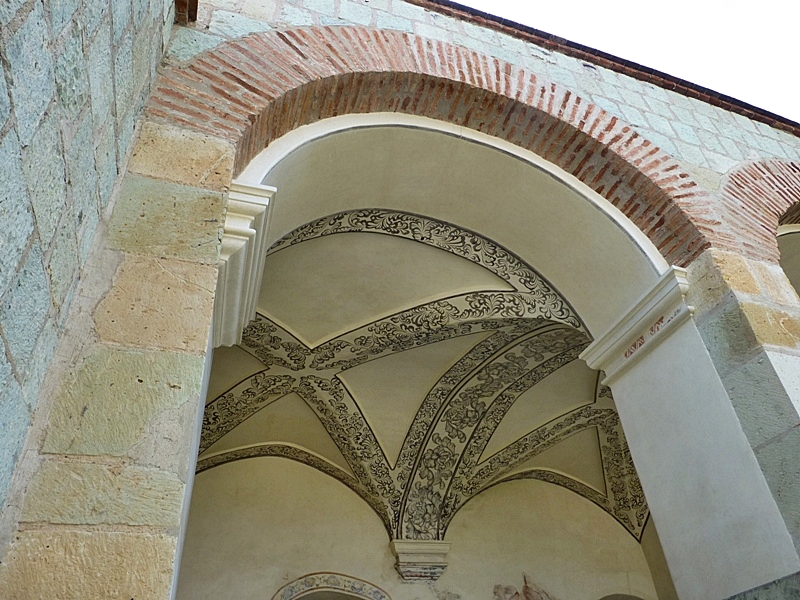 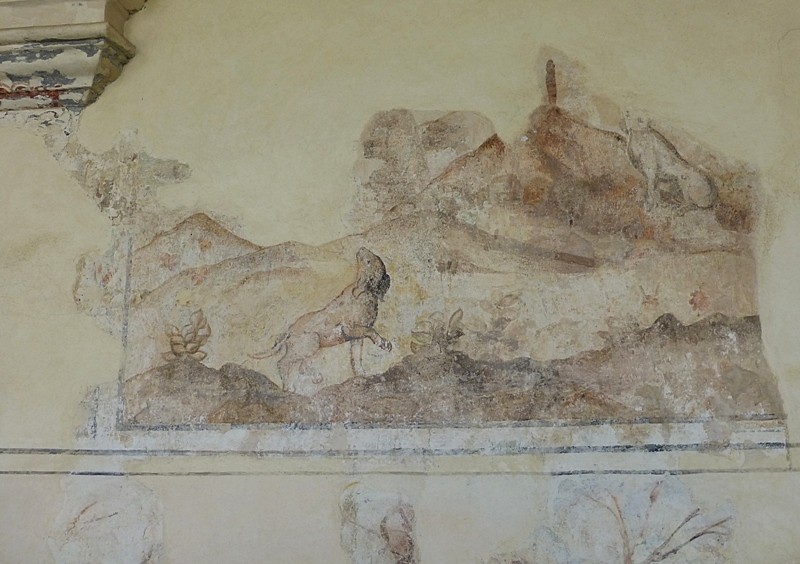 The first exhibition space I stuck my head into turned out to be about the religion brought by the Spaniards. Frankly, besides the gloom I already complained about, it's hard to get excited about these items in a museum, when I'm surrounded by churches where I could see similar things in situ. The first exhibition space I stuck my head into turned out to be about the religion brought by the Spaniards. Frankly, besides the gloom I already complained about, it's hard to get excited about these items in a museum, when I'm surrounded by churches where I could see similar things in situ.
At any rate, I found this cross interesting. The card next to it said: During the 16th century, the image of Christ crucified was not much utilized, in order to avoid confusing the Indians with the idea of sacrifice. This custom lasted until the 18th century, as shown by this Cross of Calatrava.In another space, I saw these bells with a card that said: Bit by bit the Catholic temple became the symbol of the indigenous communities. And among the elements most important were the bells, whose sound marked the routine activities throughout the day.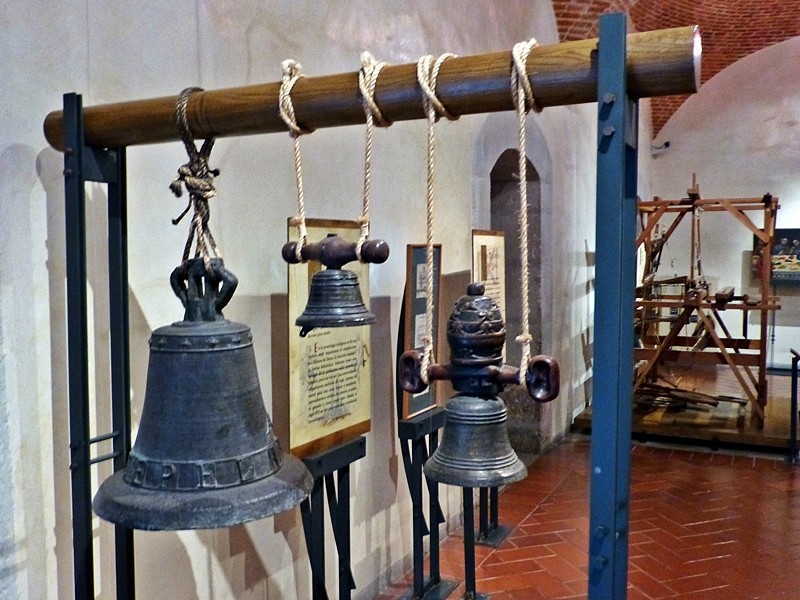 I can see looms such as this in daily use a few blocks from my house. Its card reads: The foot loom was introduced in the 16th century, most likely by the Dominican friars. By the 18th century, woolen fabric had gained importance in the city of Antequera [Oaxaca] and the towns of the valley and the Mixteca.Wandering out of that room, I came across this still for making mescal. It's identical to some still in use. I can see looms such as this in daily use a few blocks from my house. Its card reads: The foot loom was introduced in the 16th century, most likely by the Dominican friars. By the 18th century, woolen fabric had gained importance in the city of Antequera [Oaxaca] and the towns of the valley and the Mixteca.Wandering out of that room, I came across this still for making mescal. It's identical to some still in use.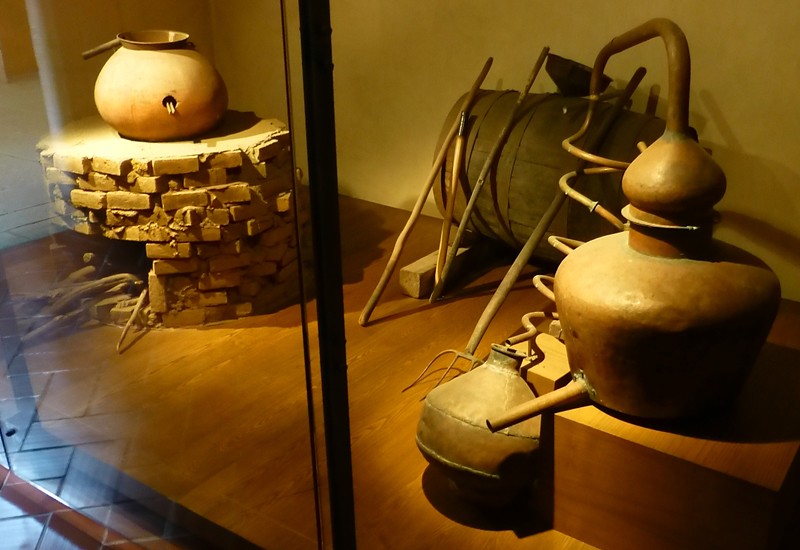 And this picture was taken for all my fellow photo-reporters here on anyport ~ And this picture was taken for all my fellow photo-reporters here on anyport ~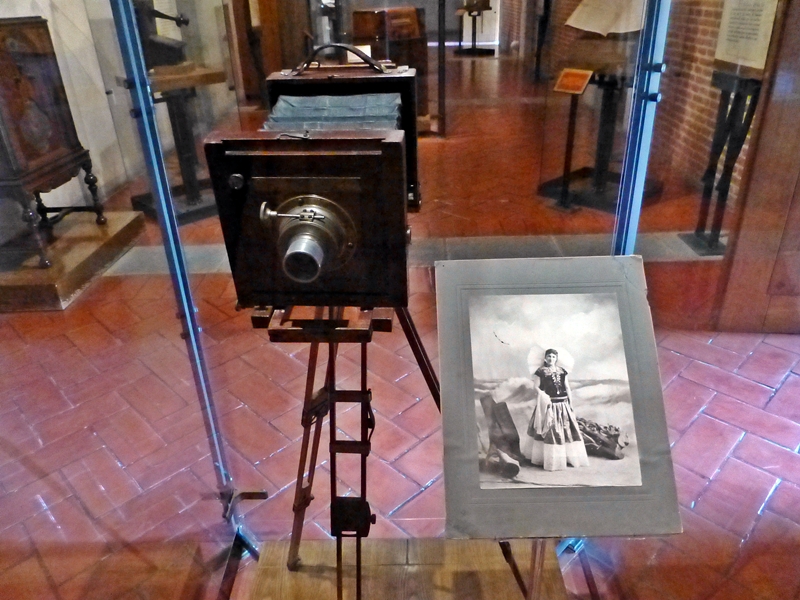 |
|
|
|
Post by bixaorellana on May 29, 2013 6:16:28 GMT
|
|
|
|
Post by anshjain97 on May 29, 2013 9:56:09 GMT
This is very inspiring because I've never seen a church so deeply.
|
|
|
|
Post by Deleted on May 29, 2013 17:07:10 GMT
The very first place that I saw flamboyants was in Mauritius and I have loved them ever since.
|
|